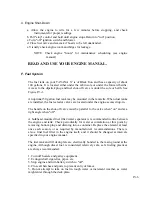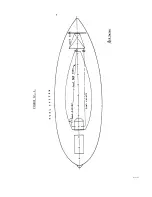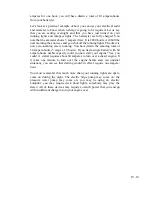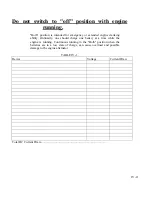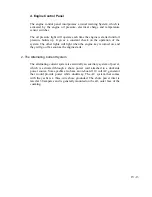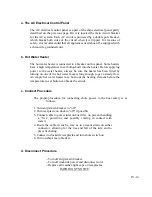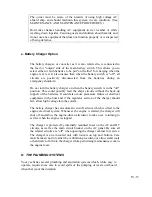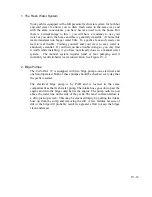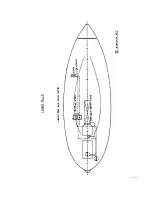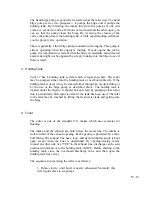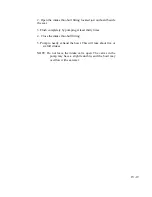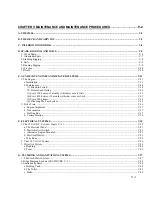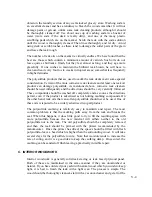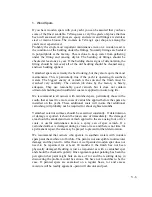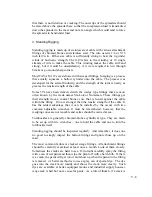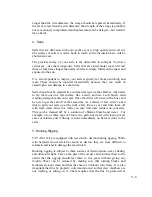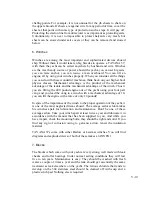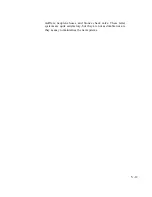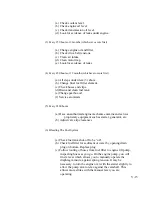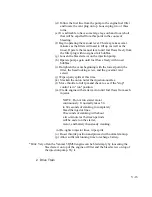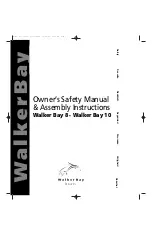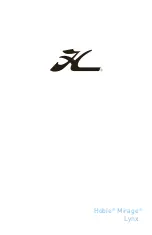
V-1
CHAPTER V MAINTENANCE AND MAINTENANCE PROCEDURES .................................V-2
A. THE HULL- ..................................................................................................................................................................... V-2
B. THE DECK AND CABIN TOP..................................................................................................................................... V-3
C. INTERIOR WOODWORK........................................................................................................................................... V-4
D. SPARS, RIGGING, AND SAILS ................................................................................................................................... V-5
1. Wood Spars....................................................................................................................................................................V-6
2. Aluminum Spars ............................................................................................................................................................V-7
3. Standing Rigging ............................................................................................................................................................V-8
4. Sails ...............................................................................................................................................................................V-9
5. Running Rigging.............................................................................................................................................................V-9
6. Winches ........................................................................................................................................................................V-10
7. Blocks ...........................................................................................................................................................................V-10
E. AUXILIARY ENGINES AND RELATED SYSTEMS............................................................................................. V-11
1. The Engine....................................................................................................................................................................V-11
a. Installation................................................................................................................................................................V-11
b. Maintenance.............................................................................................................................................................V-14
(1) Break-in Period.................................................................................................................................................V-14
(2) Before Each Outing ..........................................................................................................................................V-14
(3) Every 150 hours or 3 months (whichever occurs first)......................................................................................V-15
(4) Every 450 hours or 12 months (whichever occurs first)....................................................................................V-15
(5) Every 2400 hours...............................................................................................................................................V-15
(6) Bleeding The Fuel System................................................................................................................................V-15
2. Drive Train ..................................................................................................................................................................V-16
a. Engine Alignment ...................................................................................................................................................V-17
b. Transmission ...........................................................................................................................................................V-17
c. Stuffing Box ............................................................................................................................................................V-17
d. Cutlass Bearing .......................................................................................................................................................V-18
F. ELECTRICAL SYSTEMS........................................................................................................................................... V-18
1. The 12 Volt D.C. System - Figure V.-2.) .....................................................................................................................V-19
a. The Electrical Panel .................................................................................................................................................V-21
b. Master Battery Switch.............................................................................................................................................V-23
c. Alternator, Engine Mounted....................................................................................................................................V-23
d. Electrical Starter......................................................................................................................................................V-23
e. Wire Runs ................................................................................................................................................................V-23
2. The 110 Volt AC System.............................................................................................................................................V-26
3. Protective System ........................................................................................................................................................V-26
a. Bonding....................................................................................................................................................................V-26
b. Zincs.........................................................................................................................................................................V-26
G. PLUMBING AND SANITATION SYSTEMS........................................................................................................... V-27
1. The Fresh Water System..............................................................................................................................................V-27
2. BiIge Pumping Systems (SEE FIGURE V.-3.) ............................................................................................................V-28
3. Sanitation Systems........................................................................................................................................................V-28
a. Holding Tank ...........................................................................................................................................................V-28
b. The Toilet.................................................................................................................................................................V-29
c. Sinks........................................................................................................................................................................V-29
Summary of Contents for 37
Page 1: ...Chapter I OPERATIONS AND MAINTENANCE MANUAL Chapter 1...
Page 7: ...I 6...
Page 8: ...I 7...
Page 9: ...I 10...
Page 10: ...I 11 BARIENT WINCH 22 WINCH ASSEMBLY...
Page 14: ...II 3 Polars for Tayana37 Cutter...
Page 18: ...II 7...
Page 45: ...IV 8...
Page 54: ...IV 17...
Page 69: ...V 13...
Page 76: ...V 20...
Page 80: ...V 24 moisture eliminating product...
Page 81: ...V 25...

